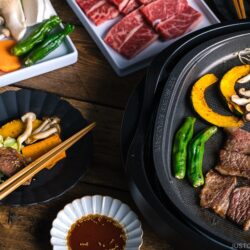
Teppanyaki Recipe with Homemade Yakiniku Sauce
Here’s the ultimate guide on how to make a true Japanese Teppanyaki at home! With an electric griddle at the table and fresh vegetables and proteins of your choice, you can easily enjoy the fun of indoor grilling anytime. A homemade Yakiniku Sauce is a must. {Vegetarian adaptable}
Ingredients
- 12 oz boneless beef short ribs (slice to ⅛ inch, 3 mm thick; 6 oz, 170 g per person is a good amount to start; you could use chicken, pork, or seafood instead; for vegan, use tofu or other vegetables)
- 4 oz green cabbage (4 small cabbage leaves)
- 3 oz carrot (2 inches, 5 cm)
- 4 oz kabocha squash (⅛ of a whole kabocha with seeds)
- 4 shishito peppers
- 2 oz shimeji (brown beech) mushrooms (½ package)
- 2 shiitake mushrooms (2 oz, 57 g)
- 1 king oyster mushroom (2 oz, 57 g)
- 3.5 oz bean sprouts
- 1 Tbsp neutral oil
- Diamond Crystal kosher salt (to taste)
- freshly ground black pepper (to taste)
For the Yakiniku Sauce (yields 100 ml, enough for 4 servings)
- 1 Tbsp sake (I use Sho Chiku Bai Classic Junmai)
- 2 Tbsp mirin (I use Takara Mirin)
- 2 Tbsp sugar
- ¼ cup soy sauce
- ½ tsp ginger (grated)
- 1 clove garlic
- 1 tsp toasted sesame oil
- 1 tsp toasted white sesame seeds
Instructions
To Make the Yakiniku Sauce
- Gather all the sauce ingredients. Please note that my Yakiniku Sauce recipe makes twice the number of Teppanyaki servings—this way, there‘s plenty of extra dipping sauce to go around. Also, I‘ve doubled the standard 4-serving sauce recipe here so it‘s easier to see in the step-by-step photos.
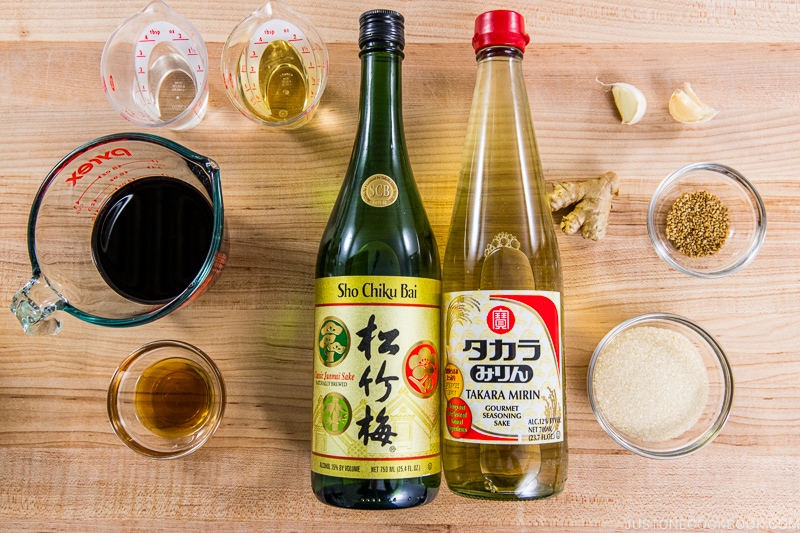
- In a small saucepan, combine 1 Tbsp sake and 2 Tbsp mirin. Turn the heat to medium and let the alcohol evaporate for 1–2 minutes.
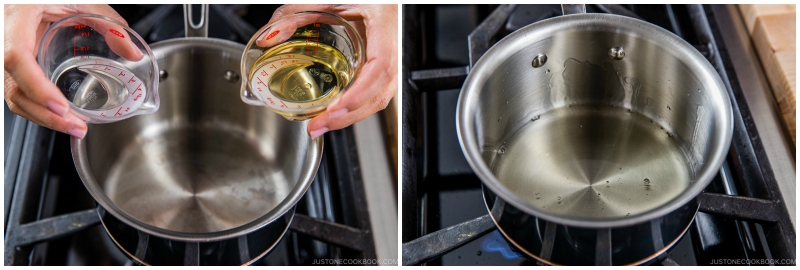
- Add 2 Tbsp sugar and whisk to combine.
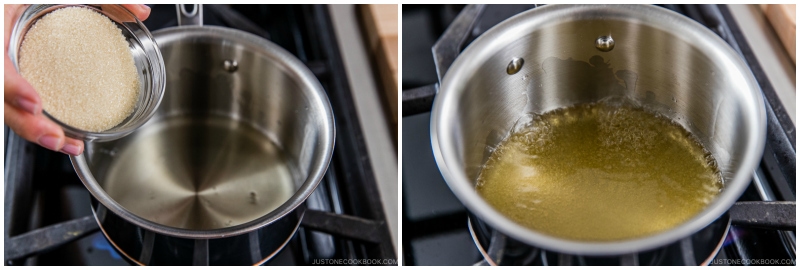
- Add ¼ cup soy sauce.
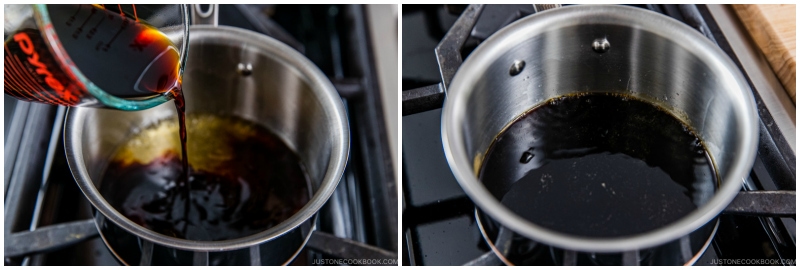
- Peel and grate the ginger and reserve ½ tsp ginger (grated, with juices). Note: The photo shows 1 tsp because I made 8 servings for demonstration purposes.
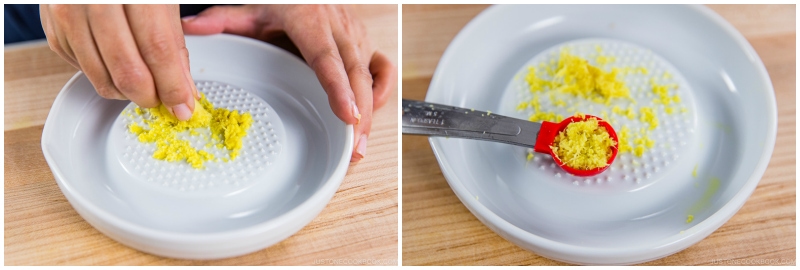
- Mince or crush 1 clove garlic (I use this garlic press) into the saucepan. Then, add the grated ginger.
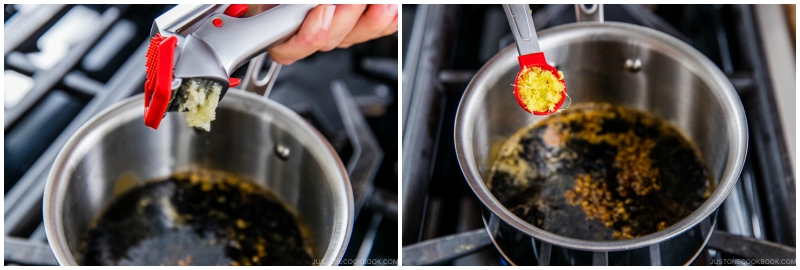
- Add 1 tsp toasted sesame oil.
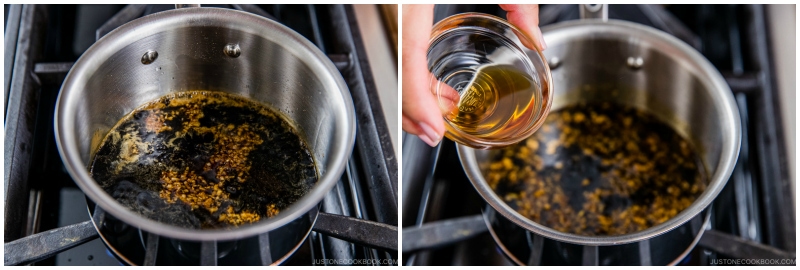
- Add 1 tsp toasted white sesame seeds and whisk together.
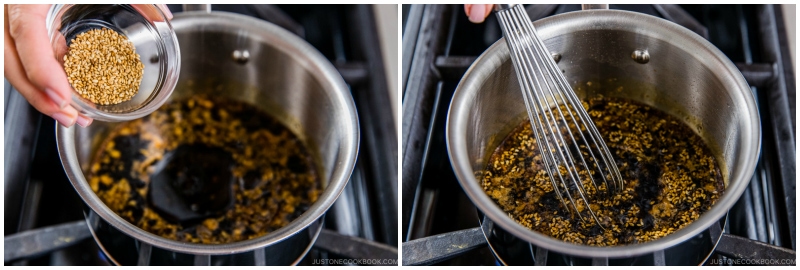
- Turn off the heat and it‘s ready to use. To store: Transfer to a sterilized jar and keep in the refrigerator for up to 3–4 weeks or the freezer for a couple of months. Tip: The flavor will improve if you let it sit for a day. If you have time, I highly recommend making the sauce a day in advance.
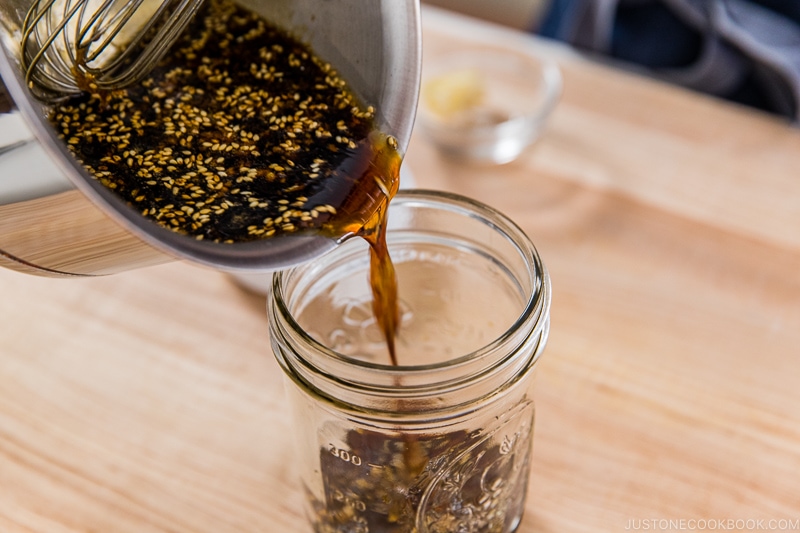
To Prepare the Ingredients
- Gather all the Teppanyaki ingredients. Set 12 oz boneless beef short ribs on a serving platter and keep in the refrigerator until you’re ready to cook.
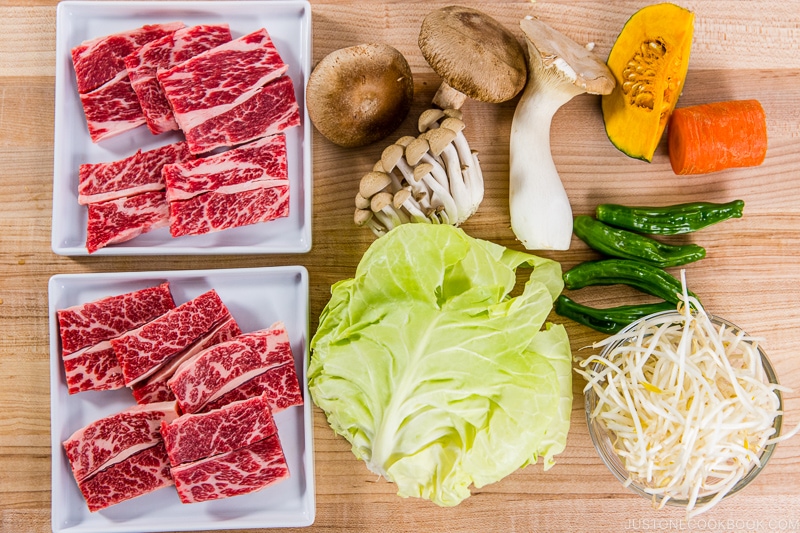
- Remove the tough core of 4 oz green cabbage leaves. Cut the leaves into 1-inch (2.5-cm) squares.
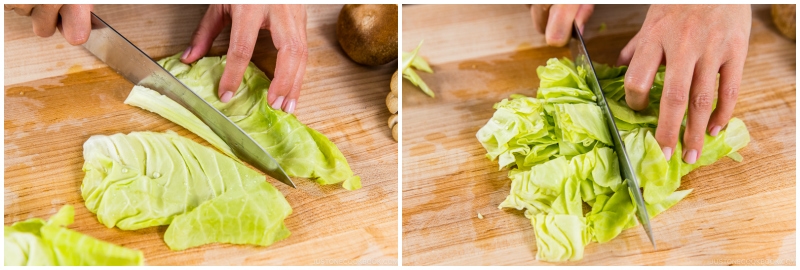
- Peel 3 oz carrot and slice into slabs ⅛ inch (3 mm) thick.
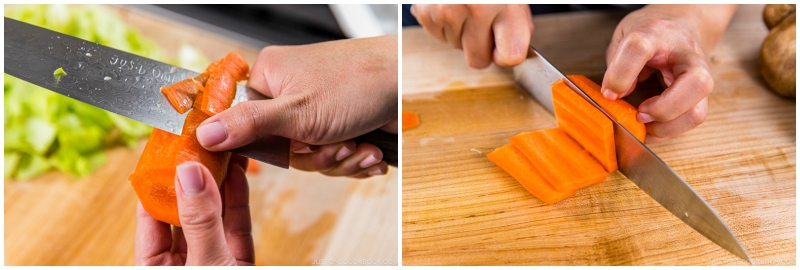
- Remove and discard the seeds from 4 oz kabocha squash. Cut it into ⅛-inch (3 mm) slices.
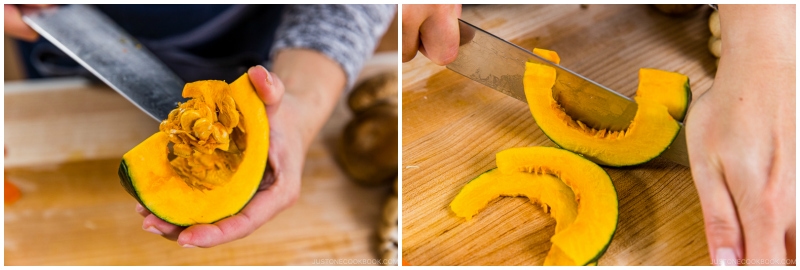
- Poke a few holes in 4 shishito peppers for the steam to release while cooking and avoid popping. Cut off and discard the ends of 2 oz shimeji (brown beech) mushrooms and separate them into small clusters.
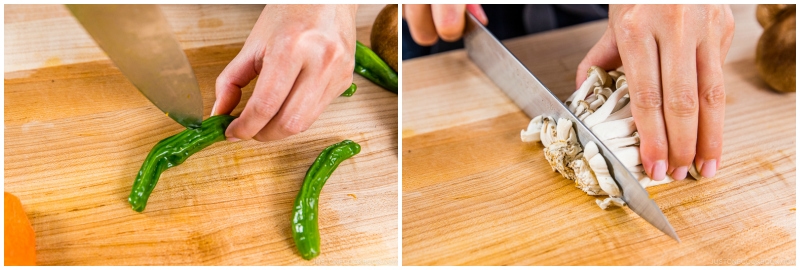
- Remove and discard the stem of 2 shiitake mushrooms and cut the caps into thin slices ⅛ inch (3 mm) thick.
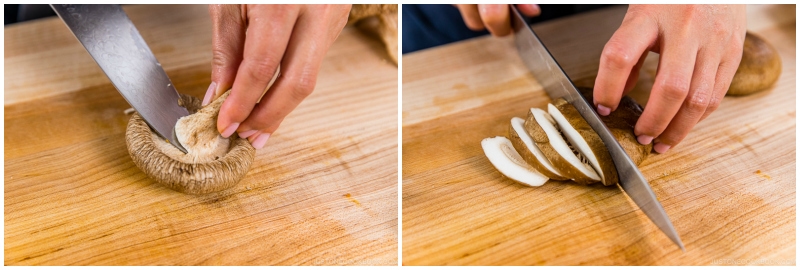
- Cut 1 king oyster mushroom in half lengthwise and then slice into thin slabs.
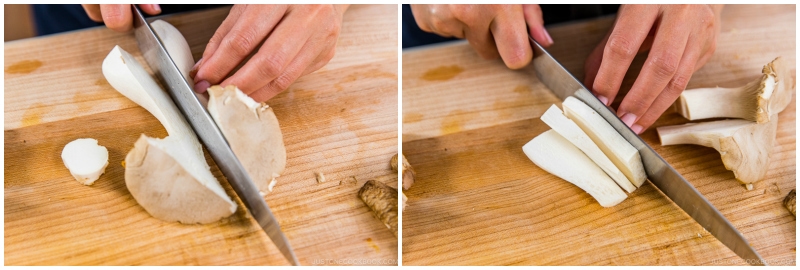
- Rinse 3.5 oz bean sprouts and drain well. Put all the vegetables and mushrooms on another serving platter. Bring the meat and vegetable platters to the table where you have set up a portable electric griddle.
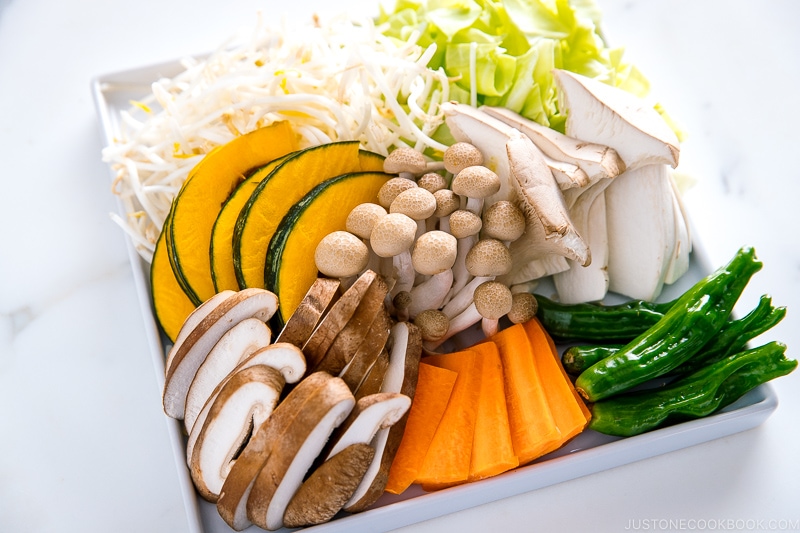
To Cook the Teppanyaki
- Preheat the electric griddle to 375ºF (190ºC). When the griddle is hot, grease the cooking surface with 1 Tbsp neutral oil. If the meat is well-marbled, you do not need to grease the area where you will cook the meat. We usually divide the griddle space into different sections, such as the meat section, vegetable section, or mushroom section. Next, put the vegetables and meat on the griddle in a single layer; depending on the size of your griddle, you may need to cook the ingredients in batches. Season the vegetables and mushrooms with Diamond Crystal kosher salt and freshly ground black pepper; keep the meat unseasoned.
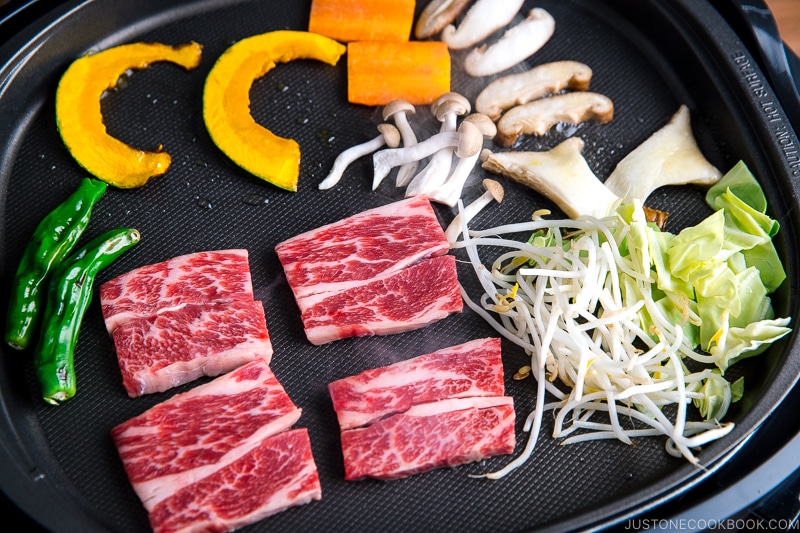
- Prepare a medium plate and a small bowl of Yakiniku Sauce for each person. As the food finishes cooking, transfer the cooked ingredients to the individual plates. Dip in the homemade Yakiniku Sauce and enjoy!
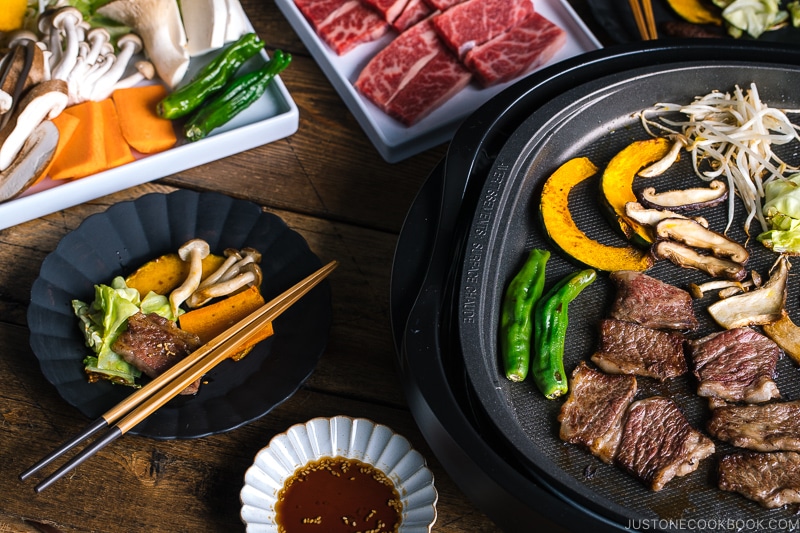
To Store
- You can keep the leftovers in an airtight container and keep them for 3 days in the refrigerator or for up to a month in the freezer. You can also keep the airtight jar of Yakiniku Sauce in the refrigerator for up to 3–4 weeks or in the freezer for a couple of months.
Nutrition
Calories: 504kcal, Carbohydrates: 28g, Protein: 39g, Fat: 26g, Saturated Fat: 13g, Cholesterol: 100mg, Sodium: 744mg, Potassium: 1497mg, Fiber: 7g, Sugar: 14g, Vitamin A: 7959IU, Vitamin C: 37mg, Calcium: 79mg, Iron: 6mg